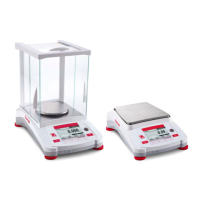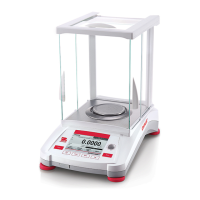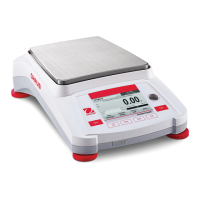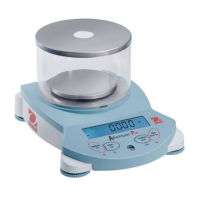
Do you have a question about the OHAUS Adventurer AR2130 and is the answer not in the manual?
Allows selection of up to 16 measuring units plus parts counting.
Allows balance calibration using linearity methods, requiring two masses.
Enables tone signal with each keystroke for user feedback.
Configures communication parameters like Baud rate, Parity, Data, and Stop bits.
Exits the menu and returns the balance to weigh mode.
Guides on choosing an indoor environment free from drafts, vibration, and extreme conditions.
Explains how to ensure horizontal positioning using the level indicator and leveling feet.
Describes the procedure to power on the balance and initial display status.
Instructions on how to properly shut down the balance.
Step-by-step guide for performing weight measurements on the balance.
Procedure for zeroing the balance to exclude container weight before measuring.
Details how to activate specific measuring units and parts counting features.
Enables or disables the audible tone that sounds with each keystroke.
Configures the balance to print data automatically or manually.
Restores communication and printing settings to their factory default values.
Explains how to use the balance for counting items based on a sample weight.
Configures the data transmission speed for communication.
Sets the parity bit for error checking in data transmission.
Selects the number of data bits for communication transmission.
Determines the number of stop bits for serial communication.
Lists the specific masses required for span and linearity calibration procedures.
Procedure to calibrate the balance's weighing range using zero and capacity masses.
Procedure to minimize weight deviations using three different mass values.











